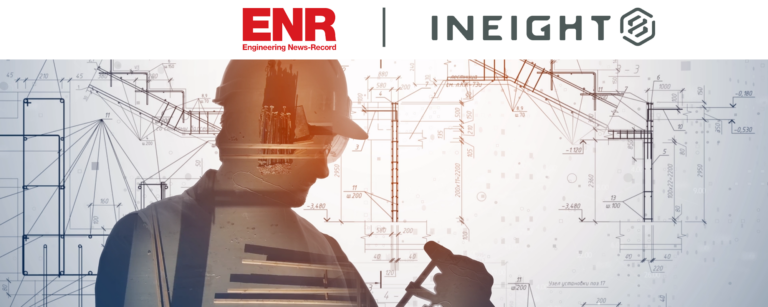Global Capital Projects Outlook: Why the Health of Your Data Matters More Than Ever
August 10, 2023
The latest Global Capital Projects Outlook (GCPO) is out, and with it have come many rich construction industry insights. Among these for 2023 is the reality of data “haves and have nots.”
This phenomenon centers around the advantages provided for project outcomes for those with solidly digitalized technology tools and techniques versus those organizations without them. And the numbers don’t lie. Per Outlook responses, companies already implementing digital solutions are seeing improved results in project delivery. Of the organizations that deliver projects ahead of or on schedule, 69% use project controls software.
Underlying this digitalization is the careful gathering of data to form a solid foundation of current and historical markers to compare and contrast vital information, and the benefits that come with this foundation.
But will any data suffice? Is it quality over quantity, and what about organizational methods?
We sat down with Rob Bryant, Executive Vice President, Asia-Pacific & Japan for InEight, to get his insights and answers on what data health means now, and why getting it right can make the difference between success and failure in the coming years.
The Data Communications Challenge
Whether owner or contractor, even with all the negative factors still having an impact on project delivery and development, Bryant sees the Outlook as painting a generally positive picture for the sector’s future.
Yet he cautions that this positivity — if it is going to continue — will depend on how the importance of data health is handled by the industry, and if the “haves” can use it to its best advantage. If they can, it means much more accurate insights for project delivery, and ultimately granting more operational awareness in the process.
But it starts with communication.
“What everything is coming down to is that we all need to collaborate at a much higher level and share information across different disciplines more than ever before,” he explains.
Bryant adds that while he’s seen greater acknowledgment of the role digital technologies can play in allowing construction teams from any discipline to collaborate remotely, focusing on communication among stakeholders is still a challenge. Data sources remain siloed, and data formats inconsistent.
The need for interoperability, or the capacity for digital technologies to interact with each other, has also escalated.
“This is turning out to be an increasingly important component for contractors as well as owners using different programs and systems,” says Bryant.
Again, data — or the right data — is key.
Getting It Together
As organizations look at a project and how they’re going to run it, the traditional focus tends to be on the applications and individual processes. What are we going to use for subcontract management? How is it going to work? What are we going to use for document control? How will our ERP play into things?
Once the work starts and those decisions are made, many businesses come to realize that the very way they’re going to operationally run things day-to-day and manage how they’re going to perform becomes a reporting and data visualization exercise.
Therefore, it is vital to bring all that data together so teams can start seeing issues and trends early.
But until there is a connected system in place, there will still be disparate data sources. Individuals will still be involved with moving data from system A to system B and using key data relationships to make sure that system A and system B talk to each other, and that the data can be related.
The other thing that consolidating data provides is focus on the project, which is always good. Now you have people putting data together and consolidating it into streamlined visualization mechanisms.
“The value that can be realized from this work really starts as teams begin literally looking across projects,” Bryant says. “Once this begins, key cross-project insights start to appear, and these insights in terms of productivity and benchmarking can be used.”
A New Look at Data Health and Truth
At this point, it’s time to categorize this newly consolidated data to better manage how work gets done and what real costs will look like. But again, how this will work most efficiently comes down to where you are in your technology journey.
“The organizational discipline of today’s most advanced connected data software is incredible in that you can use it with every project in your organization to begin to harness the often-hidden power that your data provides,” explains Bryant.
But he also points out that while advances in Artificial Intelligence (AI) and machine learning are happening quickly and will eventually be able to handle data discrepancies more effectively, it’s still essential that contractors and project owners develop realistic expectations about what today’s AI can and cannot do.
“Some organizations still have a perception that AI technology in general can now look at a vast set of unstructured data and make complete sense of it,” he says. “That simply isn’t true yet.”
At the present, data still needs to be clean and well-organized for these technologies to be leveraged fully.
“Because if you keep your data unorganized, today’s AI will still find invalidated trends, as it assumes that you’re telling the truth. Therefore, the cleaner and better organized your data is, the better quality of the insights that you will achieve,” says Bryant.
The payoff?
“With clean data and AI together, you can begin tackling efficiency problems while your knowledge base of acceptable productivity rates and best costs continues to grow as more healthy data is fed into this standardized structure,” Bryant adds.
Keeping Your Data Clean — and Safe
Once your data is considered clean and organized, now you can focus on keeping all of it protected from future interference. You’ll want to make sure it stays that way because it has now become one of the best assets you can have to earn and complete better projects in the future.
When you achieve true connectivity and well-organized data, your projects will get better over time from storing and measuring your historical knowledge as you create each subsequent project.
Another benefit of clean data within a connected system?
The elimination of the need to shuttle data back and forth between traditional point solutions. After all, point solutions were created to focus on a particular problem and are really good at sourcing where those are, but they don’t generally “talk” to each other.
“Your clients will be able to count on you more now because they know that you have truly actionable data, not simply disparate systems full of gaps,” Bryant explains. “You can communicate plans in a timely way to any and all stakeholders you choose, plus get early operational warnings to keep people safer.”
Even that kind of communication is changing for the better.
“It’s interesting that a lot of conversations are now centered around what the most desirable outcome is to all of this, and around why contractors and project owners are employing digital technologies, rather than just deploying it because they feel as though they should,” Bryant says. “This is a very important shift, and one that we’ve seen reflected in the Outlook over and over.”
With a connected system, people associated with the project can get back to the business at hand, which is not building a computer system, but building the work.
Navigating the Gathering Storm
“If you’re using data for benchmarking, you’ve obviously got to have trusted data to start with,” Bryant says. “But if this has only started to be collected in a meaningful and consistent way over the past couple of years, then you’re only now starting to be in a position where you can use it and compare it to what came before and what will come in the future.”
Unfortunately, this situation leads us back the have nots.
“Those who haven’t started to gather this data could be four or five years behind,” Bryant estimates. “That gap becomes even more exaggerated because you’ve got organizations and project groups that are much more invested in their application of data and how it helps them to assess and plan effectively, versus those organizations that haven’t started that process yet.”
Not using such a data set can have detrimental impacts on project delivery as well. The results could include communication barriers, unforeseen risks and a lack of data sharing, leading to poor project outcomes — and a tarnished reputation in the industry.
Further adoption of new technologies for creating clean, healthy data may also require a shift of focus when it comes to traditional project contract models.
“With the traditional models, one of the issues has always been trust, as there hasn’t been much transparency during project progress,” Bryant points out. “At InEight, we understand this because our goal is to not only create value and insights by providing structure in our solutions, but also transparency. We are all about challenging how well data can be used to create that kind of actionable transparency.”
Used to its best advantage, technology is creating an environment where stakeholders can now share clean, organized information not only easily but at a level of accuracy never before achievable.
“This can create that greater level of trust,” says Bryant. “They can share what they’re learning in real time and can make decisions collaboratively around scheduling and budgeting. We have a good chance over the next few years for this to shift quite dramatically in the most positive direction.” The catch?
“It will require a change in attitude from project owners as well as contractors,” Bryant says. “After all, we’re all in this together.”
Ready to take a deeper dive? Schedule a one-on-one consultation to discover how InEight can help you succeed in your construction digitalization journey.
Sign up for our monthly blog newsletter today and stay up to date on the latest industry news.




